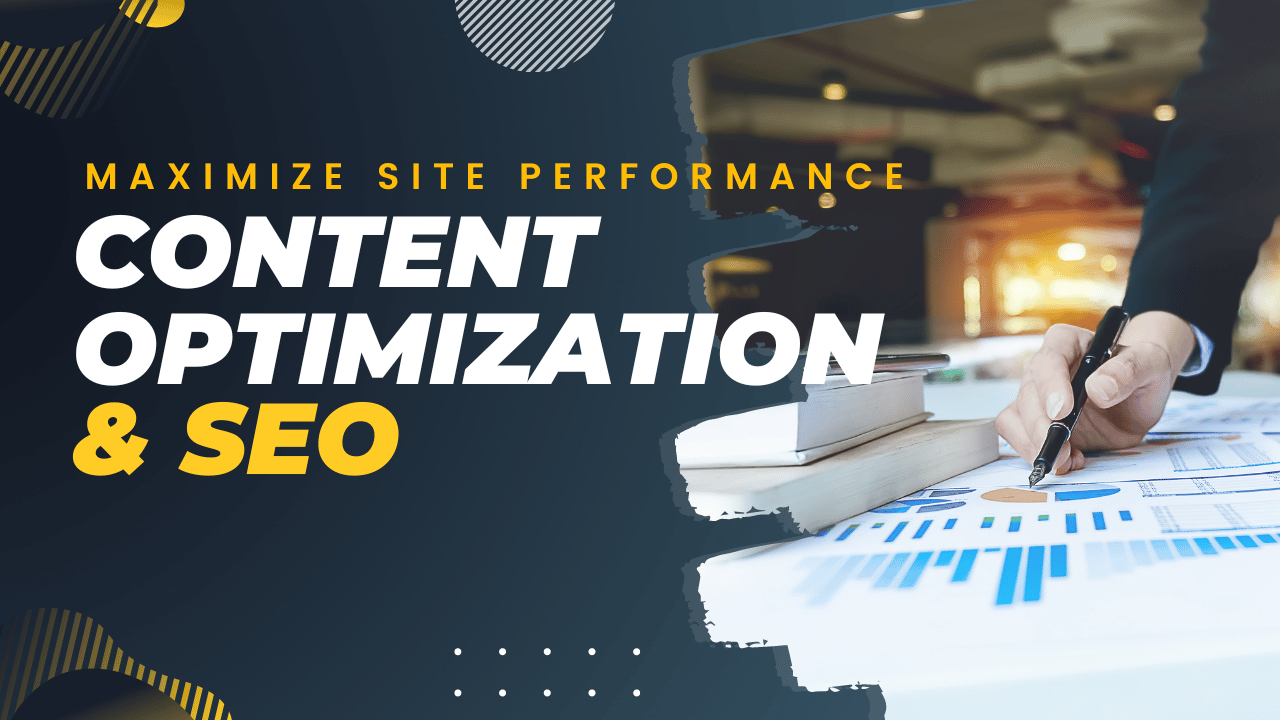Every time Google changes its mysterious recipe, your website’s position in search results might just juggle, changing the number of visitors stopping by. Have you seen a dip in traffic whenever Google changes the rules? You need solid SEO recovery strategies ready to go. Bouncing back after a Google update isn’t about luck; it requires clever tactics and a good understanding of how these changes affect your digital space.
In this guide, we will explore actionable techniques and best practices to help you navigate the recovery process and reclaim your website’s ranking. From assessing the impact of the update on your website to improving content quality, enhancing user experience, and strengthening your backlink profile, we will cover everything you need to know to bounce back from a Google algorithm update successfully.
Key Takeaways:
- Google algorithm updates can significantly impact your website’s rankings and traffic.
- Assess the impact of the update on your website using tools like Rank Math Analytics, Google Analytics, and Google Search Console.
- Understand the purpose of the update to identify areas for improvement.
- Focus on improving content quality based on expertise, authoritativeness, and trustworthiness (E-A-T).
- Enhance user experience by optimizing your website for mobile, improving navigation, and speeding up loading times.
Understanding Google Algorithm Updates
Google regularly releases algorithm updates with the aim of improving the quality of search results. These updates have a broad impact on websites across various categories and languages. It is crucial to understand the purpose of these updates, which includes assessing content quality and serving the best answers to searchers, in order to effectively navigate the recovery process.
Google Algorithm Update:
“Google Algorithm Update” is a term used to describe changes to the algorithms that Google uses to rank web pages in its search results. These updates are designed to improve the quality and relevance of search results for users, ensuring they receive the most valuable and accurate information.
Broad Core Update:
A “broad core update” is a significant algorithm update that can impact a wide range of websites across different niches and industries. These updates often involve changes to Google’s ranking factors and algorithms, with the goal of delivering more relevant and useful search results.
Content Quality:
Content quality is a crucial factor that Google algorithms consider when ranking web pages. High-quality content provides valuable and trustworthy information, meets the searchers’ intent, and helps answer their queries effectively. Evaluating and improving content quality is essential for recovering from algorithm updates.
Serving the Best Answers to Searchers:
One of Google’s key goals is to provide searchers with the best answers to their queries. Algorithm updates aim to improve search results by ensuring that websites with high-quality and relevant content are prioritized. This means that creating content that meets the needs and expectations of searchers is vital for maintaining and improving website rankings.
In order to understand and navigate the impact of Google algorithm updates, it is essential to stay informed about the latest updates and their objectives. Keeping track of industry news, following Google’s announcements, and analyzing data can help website owners and SEO professionals adapt their strategies to align with Google’s search quality guidelines.
Example: Impact of Google Algorithm Update – Broad Core Update
Let’s consider the impact of a recent broad core update on different websites:
| Website | Pre-Update Traffic | Post-Update Traffic |
|---|---|---|
| Website A | 10,000 monthly visitors | 7,500 monthly visitors |
| Website B | 5,000 monthly visitors | 9,000 monthly visitors |
| Website C | 8,000 monthly visitors | 6,500 monthly visitors |
The table above illustrates the traffic changes experienced by three different websites after a broad core update. Website A observed a decrease in traffic, indicating that the update had a negative impact on its rankings. Conversely, Website B experienced an increase in traffic, suggesting that the update positively affected its rankings. Website C saw a slight decrease in traffic, indicating a minor impact from the update. Understanding the post-update impact on website traffic is crucial for developing recovery strategies.
With a comprehensive understanding of Google algorithm updates and their objectives, you can proactively adapt your SEO strategies and focus on improving content quality to meet searchers’ needs. The next section will delve into assessing the impact of algorithm updates on your website and the tools available to help you analyze and navigate the recovery process.
Assessing the Impact on Your Website
When a Google algorithm update occurs, it’s crucial to assess the impact on your website. To gain valuable insights into the performance before and after the update, analyze relevant data using tools like Rank Math Analytics, Google Analytics, and Google Search Console.
By monitoring key metrics such as traffic, keyword rankings, and engagement, you can determine the extent of the update’s impact and identify areas for improvement. Understanding the changes in these metrics will help you make data-driven decisions to enhance your website’s performance.
“Monitoring key metrics like traffic, keyword rankings, and engagement can help you determine the extent of the impact and identify areas for improvement.”
Analyzing Traffic
Google Analytics provides comprehensive data on your website’s traffic, including the number of visitors, their behavior, and traffic sources. Compare the traffic patterns before and after an algorithm update to identify any significant changes. Analyze the organic search traffic specifically to understand the impact on your website’s visibility in search results.
Evaluating Keyword Rankings
Rank Math Analytics, Google Analytics, and Google Search Console offer valuable insights into the ranking performance of your targeted keywords. Monitor the shifts in keyword rankings to determine if the algorithm update affected your website’s visibility for specific search queries. Identifying keywords that experienced significant fluctuations will help you assess the impact of the update on your organic search presence.
Assessing User Engagement
User engagement metrics, such as bounce rate, average session duration, and pages per session, reflect how visitors interact with your website. Analyze these metrics within Google Analytics to identify any changes triggered by the algorithm update. A decrease in engagement may indicate that the update affected the relevance or quality of your website’s content, requiring further investigation and improvement.
By assessing the impact of a Google algorithm update using tools like Rank Math Analytics, Google Analytics, and Google Search Console, you can gain valuable insights into your website’s performance. Monitoring traffic, keyword rankings, and user engagement will help you understand the extent of the impact and make informed decisions to optimize your website’s recovery.
Evaluating the Purpose of the Update
Understanding the purpose of a Google Algorithm update is essential to navigate the recovery process effectively. While Google may not disclose all the details, they sometimes confirm the focus of the update, such as spam fighting. Analyzing your website’s analytics data and comparing it to the content that has seen significant declines can help you identify the areas that might have been affected by the update.
By evaluating the purpose of the update, you can gain valuable insights into the specific aspects of your content that need assessment. Google algorithm updates often prioritize content quality and relevance, making it crucial to evaluate the performance of your website against these metrics.
“Understanding the purpose of a Google algorithm update can provide valuable insights into the areas you need to focus on for recovery.”
Assessing Content Quality
One of the primary purposes of Google Algorithm updates is to assess the quality of content provided to users. Analyzing your website’s content against Google’s guidelines can help you identify potential areas for improvement.
Pay attention to factors such as:
- The relevance and accuracy of your content
- The freshness and comprehensiveness of your information
- The presence of duplicate or thin content
By conducting a thorough assessment of your content, you can identify any areas that may not meet the standards set by Google and make the necessary improvements.
Combatting Spam
Spam fighting is an ongoing priority for Google Algorithm updates. These updates aim to ensure that search results are of high quality and provide value to users. By targeting spammy tactics and low-quality content, Google seeks to deliver a better user experience.
Some spam fighting techniques that Google Algorithm updates address include:
- Keyword stuffing and unnatural link building
- Thin content or autogenerated pages
- Deceptive practices such as cloaking or hidden text
Identifying any potential instances of spam on your website and taking corrective actions can contribute to your recovery from a Google Algorithm update.
Analyzing Analytics Data
Your website’s analytics data is a valuable resource when evaluating the impact of a Google Algorithm update. By comparing your data before and after the update, you can identify any significant changes in metrics such as traffic, engagement, and conversions.
“Analyzing your website’s analytics data and comparing it to the content that has seen significant declines can help you identify the areas that might have been affected by the update.”
Look for any patterns or trends in the data to pinpoint areas that require further assessment. For example, if you notice a decline in traffic for specific pages or keywords, it may indicate that those areas were negatively influenced by the algorithm update.
Improving Content and E-A-T
High-quality content is a crucial factor in recovering from a Google algorithm update. Google values expertise, authoritativeness, and trustworthiness (E-A-T), so it’s essential to assess your content based on these criteria. By aligning your content with Google’s ranking factors, you can enhance your website’s chances of recovery and improve its overall performance.
To improve content quality, focus on providing original and valuable information to your audience. Offer unique insights and perspectives that demonstrate your expertise in the subject matter. This can be achieved through in-depth research, data analysis, and presenting thought-provoking ideas.
Additionally, it is important to demonstrate your authoritativeness by providing clear sourcing and references. Cite credible sources, link to reputable websites, and include data that supports your claims. This will help build trust with your audience and signal to Google that your content is reliable and trustworthy.
When evaluating your content, consider the user experience and readability. Make sure your content is easy to navigate, well-structured, and visually appealing. Use headings, lists, and images to enhance readability and break up the text into digestible chunks.
“Content quality is not just about producing informative articles; it’s about creating valuable content that engages and resonates with your audience.” – [Author Name]
By continuously improving the quality of your content and demonstrating expertise, authoritativeness, and trustworthiness, you can not only recover from a Google algorithm update but also position yourself as a reliable source of information in your industry.
Example: Assessing Content Quality
Let’s take a look at an example of how content quality can be improved:
| Before | After |
|---|---|
| The article lacks depth and originality. It provides generic information that can be found on various websites. | The article dives deep into the topic, providing unique insights backed by extensive research and expert interviews. |
| The sources and references are not cited, making it difficult for readers to verify the information. | The article includes proper citations and references to credible sources, increasing its trustworthiness and authority. |
| The article is poorly structured, with long paragraphs and no subheadings to guide readers. | The article is well-structured, with clear subheadings and bullet points to enhance readability and user experience. |
By making these improvements, your content will not only appeal to your audience but also meet Google’s expectations for high-quality, valuable content. Remember, content quality is key to recovering from algorithm updates and maintaining a competitive online presence.
Enhancing User Experience
User experience plays a crucial role in website rankings. To improve your website’s performance and increase your chances of recovering from algorithm updates, it is important to focus on optimizing mobile-friendliness, navigation, and loading speed.
Mobile-Friendly Design
With the increasing use of mobile devices for browsing the internet, having a mobile-friendly website is more important than ever. Ensure that your website is responsive and adapts to different screen sizes, providing a seamless user experience across devices. This not only improves user satisfaction but also aligns with Google’s mobile-first indexing, which prioritizes mobile-friendly websites in search rankings.
Efficient Navigation
Easy navigation is key to enhancing user experience. Make sure your website’s navigation is intuitive and user-friendly, allowing visitors to find the information they need quickly and easily. Organize your website’s content logically, using clear and concise menu labels, dropdown menus, and internal linking to help users navigate through your site seamlessly.
Optimized Loading Speed
Website loading speed is a critical factor in user experience and SEO. Slow loading times can frustrate visitors and lead to high bounce rates. To optimize loading speed, minimize the file size of your images and videos, enable browser caching, and minimize the use of unnecessary plugins or scripts. Regularly monitor your website’s loading speed using tools like Google PageSpeed Insights and make necessary optimizations to provide a fast and seamless browsing experience.
“A mobile-friendly and user-centric website design improves user experience, reduces bounce rates, and positively impacts search rankings.” – (Insert expert’s name)
By focusing on mobile-friendly design, efficient navigation, and optimized loading speed, you can create a user-centric experience that not only boosts your website’s rankings but also keeps visitors engaged and satisfied.

Strengthening Backlink Profile
One of the key steps in recovering from algorithm updates is conducting a thorough backlink audit. By examining your website’s backlinks, you can identify and address harmful links that may be negatively impacting your rankings. To strengthen your backlink profile, it is essential to disavow these harmful links through Google Search Console and focus on building high-quality backlinks from authoritative and relevant domains.
Identifying and disavowing harmful links through Google Search Console is a critical part of the recovery process. By disavowing these links, you signal to Google that you want to distance your website from any low-quality or spammy domains that may have affected your rankings. This step ensures that your backlink profile is free from any negative association and sets the foundation for improving your website’s authority.
Building high-quality backlinks from authoritative domains is equally important in strengthening your backlink profile. By acquiring backlinks from reputable websites that are relevant to your industry or niche, you can enhance your website’s authority and credibility in the eyes of search engines. Each high-quality backlink serves as a vote of confidence, indicating to search engines that your content is valuable and trustworthy.
Performing a Backlink Audit
The first step in strengthening your backlink profile is to perform a comprehensive backlink audit. This involves analyzing all the links pointing to your website and assessing their quality and relevance. Tools like Ahrefs, SEMrush, or Moz can provide you with valuable insights into your backlink profile, including the number of backlinks, their source domains, and their quality metrics.
During the audit, pay close attention to any links that come from low-quality, spammy, or irrelevant websites. These harmful links can have a detrimental impact on your rankings and need to be addressed promptly. Once identified, you can use Google Search Console’s disavow tool to inform Google that you no longer want these links to be associated with your website.
Building High-Quality Backlinks
After conducting a backlink audit and addressing any harmful links, the next step is to focus on building high-quality backlinks from authoritative domains. Here are some strategies to consider:
- Create valuable, shareable content: Producing high-quality content that provides value to your target audience increases the chances of earning backlinks naturally.
- Guest posting: Collaborating with authoritative websites in your industry to publish guest posts can help you acquire relevant backlinks and increase your website’s visibility.
- Broken link building: Identify broken links on authoritative websites and offer replacement content from your own website, earning valuable backlinks.
- Link outreach: Reach out to relevant website owners or bloggers and offer to contribute valuable content or collaborate on projects that can result in backlinks.
Remember, the key to building high-quality backlinks is to focus on relevance, authority, and the value your content provides to users. By consistently acquiring backlinks from authoritative domains, you can strengthen your backlink profile and improve your website’s performance in search rankings.
Backlink Audit Checklist
| Steps | Description |
|---|---|
| 1 | Use backlink analysis tools like Ahrefs, SEMrush, or Moz to gather data on your backlink profile. |
| 2 | Identify harmful links from low-quality, spammy, or irrelevant domains. |
| 3 | Disavow harmful links through Google Search Console, signaling your website’s disassociation with them. |
| 4 | Focus on building high-quality backlinks from authoritative and relevant domains. |
| 5 | Keep track of your backlink profile regularly and continue to monitor and improve it over time. |
By conducting a thorough backlink audit and building high-quality backlinks, you can strengthen your website’s backlink profile, enhance its authority, and improve its performance in search rankings. Remember to regularly monitor your backlink profile and adapt your strategy to stay ahead of any algorithm updates.
Monitoring and Adapting SEO Strategy
Constant monitoring of your website’s SEO performance is essential in navigating algorithm updates. By regularly reviewing analytics data, staying updated on search engine guidelines, and making necessary adjustments to your SEO strategy based on performance data and updates, you can effectively adapt to algorithm changes and maintain your website’s visibility in search rankings.
One crucial aspect of monitoring your SEO is reviewing analytics data. Tools like Google Analytics provide valuable insights into your website’s traffic, user behavior, and conversion rates. By analyzing this data, you can identify trends, strengths, and weaknesses in your SEO strategy. Pay attention to key metrics such as organic traffic, bounce rate, and conversion rates to gauge the effectiveness of your optimization efforts.
Analytics Review Checklist
- Track organic traffic to monitor changes over time.
- Analyze user behavior metrics like bounce rate, time on site, and page views.
- Assess conversion rates to measure the impact of your SEO on lead generation or sales.
- Identify top performing pages and keywords to optimize further.
- Monitor referrals and social media traffic to measure the effectiveness of off-page optimization.
In addition to analytics review, it is crucial to stay updated on search engine guidelines. Search engines like Google often release guidelines that offer insights into their ranking factors and best practices. Familiarize yourself with these guidelines to ensure your SEO strategy aligns with the search engine’s expectations and requirements.
Search engine guidelines provide valuable insights into ranking factors and SEO best practices. By following these guidelines, you can ensure your website meets the search engine’s expectations and improve your chances of maintaining visibility in search rankings.
Furthermore, being aware of algorithm updates and industry trends is vital for adapting your SEO strategy. Stay informed through industry blogs, webinars, and forums to keep up with the latest changes and recommendations. By staying ahead of the curve, you can proactively adjust your optimization efforts to align with evolving search engine algorithms.
Strategy Adjustment Checklist
- Regularly update your content to align with current search engine guidelines.
- Optimize page titles, meta descriptions, and headings based on keyword research and performance data.
- Review and revise your target keywords based on changes in search trends.
- Expand your content creation efforts to cover emerging topics and address user needs.
- Invest in link building strategies to improve domain authority and relevance.
Remember, SEO is an ongoing process, and strategy adjustments are necessary to keep up with algorithm changes and maintain your website’s performance in search rankings. By monitoring your SEO performance, reviewing analytics data, and adapting your strategy based on search engine guidelines, you can navigate algorithm updates successfully and sustain long-term visibility for your website.

Embracing Challenges for Long-term Resilience
Recovering from algorithm updates is not just about short-term fixes but also about long-term resilience. Embracing the challenges presented by updates and focusing on continually improving content quality, enhancing user experience, and monitoring the health of your website’s SEO can help you maintain a strong online presence and adapt to future algorithm changes.
One of the key factors in recovering from algorithm updates is improving content quality. Take the time to assess your existing content and identify areas for improvement. Enhance the value and relevance of your content by providing unique insights, actionable information, and engaging writing. Remember to optimize your content for relevant keywords, but always prioritize delivering value to your audience.
Another crucial aspect of building long-term resilience is enhancing user experience on your website. A user-friendly and intuitive website not only pleases visitors, but it also signals quality to search engines. Ensure your website is mobile-friendly, invest in fast loading speeds, and optimize navigation for ease of use. You can also consider integrating interactive elements, such as quizzes or surveys, to enhance user engagement and provide a personalized experience.
To ensure ongoing SEO health monitoring, utilize tools like Google Analytics and Google Search Console. These tools provide valuable data insights into your website’s performance, including traffic patterns, keyword rankings, and user behavior. Regularly review these analytics and make data-driven decisions to optimize your SEO strategy. Monitor changes in algorithm updates and search engine guidelines to stay ahead of the curve and adapt your strategy accordingly.
Remember, recovering from algorithm updates is a journey, not a one-time fix. By embracing the challenges and continuously improving content quality, enhancing user experience, and monitoring your website’s SEO health, you can build long-term resilience and maintain a strong online presence.
Key Strategies for Long-term Resilience
| Strategy | Description |
|---|---|
| Improve Content Quality | Assess and enhance the value, relevance, and uniqueness of your content. Optimize for keywords while prioritizing audience needs. |
| Enhance User Experience | Optimize your website for mobile devices, ensure fast loading speeds, and prioritize user-friendly navigation. Incorporate interactive elements for engagement. |
| Monitor SEO Health | Regularly review analytics data using tools like Google Analytics and Google Search Console. Stay updated on algorithm updates and search engine guidelines. |
By implementing these key strategies, you can strengthen your website’s resilience to algorithm updates and maintain a competitive edge in search rankings.
Conclusion
To recover from a Google algorithm update and improve your website’s rankings, you need to approach the process strategically and fully comprehend the impact on your site. By implementing the actionable strategies outlined in this guide, you can effectively navigate the recovery process and prepare for future algorithm changes. It is vital to consistently monitor and adapt your SEO strategy to maintain a strong online presence and achieve long-term resilience in search rankings.
Algorithm recovery involves assessing the impact of the update on your website through tools like Rank Math Analytics, Google Analytics, and Google Search Console. Evaluating the purpose of the update will help you identify the areas that have been affected, such as content quality or spam fighting. Improving key aspects like content quality and user experience, while strengthening your backlink profile, can contribute significantly to your website’s recovery.
Remember, while recovering from an algorithm update may seem daunting, it is an opportunity to enhance your website’s performance and align it with Google’s ranking factors. By embracing the challenges presented by algorithm updates and continually improving your content quality, enhancing user experience, and monitoring your website’s SEO health, you can strengthen your website’s rankings and prepare for future changes.
FAQ
How can I recover from a Google algorithm update?
To recover from a Google algorithm update, you can implement several strategies such as analyzing the impact on your website, improving content quality, enhancing user experience, conducting a backlink audit, and monitoring and adapting your SEO strategy.
How do I understand Google algorithm updates?
Understanding Google algorithm updates involves staying informed about the purpose and focus of each update, analyzing your website’s analytics data, and identifying the areas that might have been affected by the update.
What tools can I use to assess the impact of an algorithm update?
You can use tools like Rank Math Analytics, Google Analytics, and Google Search Console to analyze your website’s performance before and after an algorithm update, monitor traffic, keyword rankings, and engagement metrics.
How do I evaluate the purpose of a Google algorithm update?
Evaluating the purpose of a Google algorithm update involves analyzing your website’s content based on factors like expertise, authoritativeness, and trustworthiness (E-A-T), comparing it to the content that has seen significant declines, and aligning with Google’s ranking factors.
What can I do to improve content and E-A-T?
To improve content and E-A-T, you can assess your content based on E-A-T criteria, provide clear sourcing, evidence of expertise, and trustworthy information. Additionally, focus on providing original, valuable, and insightful content.
How can I enhance user experience?
To enhance user experience, optimize your website for mobile devices, ensure easy navigation, and improve loading speeds. These factors contribute to a better user-centric experience and can help with recovery after an algorithm update.
How do I strengthen my website’s backlink profile?
Strengthening your website’s backlink profile involves conducting a thorough backlink audit to identify and disavow harmful links. Additionally, focus on building high-quality backlinks from authoritative and relevant domains.
How important is monitoring and adapting my SEO strategy?
Monitoring and adapting your SEO strategy is crucial in navigating algorithm updates. Regularly review your website’s analytics data, stay updated on search engine guidelines, and make necessary adjustments to your strategy based on performance data and updates.
How can I embrace challenges for long-term resilience?
Embracing challenges for long-term resilience involves consistently improving content quality, enhancing user experience, and monitoring the health of your website’s SEO. By doing so, you can maintain a strong online presence and adapt to future algorithm changes.
How can I recover my website’s ranking after an algorithm update?
By implementing the actionable strategies discussed in this guide, you can effectively navigate the recovery process, improve your website’s rankings, and prepare for future algorithm changes. Consistently monitor and adapt your SEO strategy to maintain a strong online presence and achieve long-term recovery.





